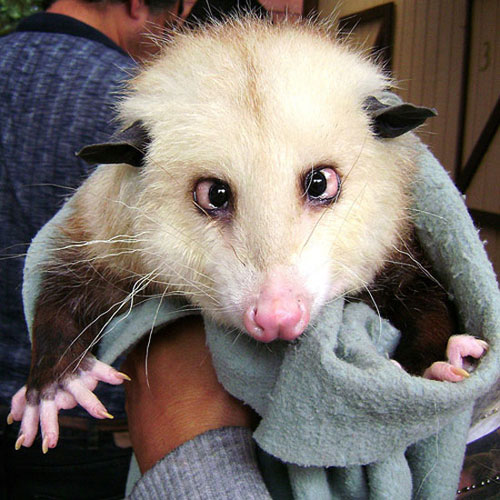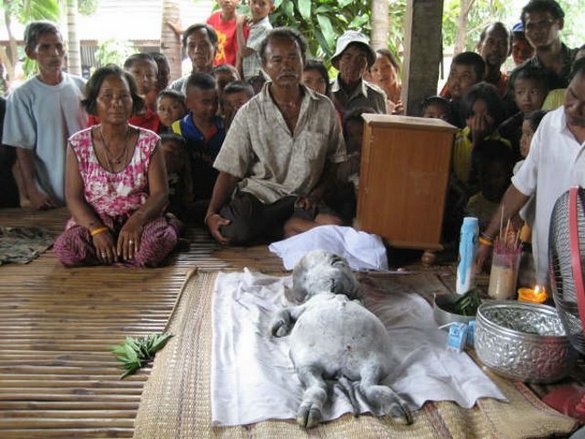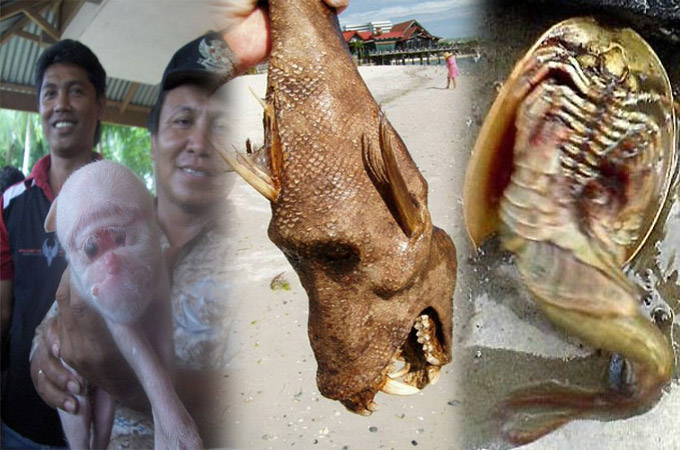Pink nose and black eyes: perfect combination to scare you a lot. Eyes convergence somewhere on your forehead, nails ready to scratch this boy’s ears, how can’t you love it
 Opossum as a food
Opossum as a food
The opossum was once a favorite game animal in the United States, and in particular the southern regions which have a large body of recipes and folklore relating to the opossum. Opossum was once widely consumed in the United States where available as evidenced by recipes available online and in books such as older editions of The Joy of Cooking. In Dominica and Trinidad opossum or “manicou†is popular and can only be hunted during certain times of the year due to over-hunting; the meat is traditionally prepared by smoking then stewing. The meat is light and fine grained, but the musk glands must be removed as part of preparation. The meat can be used in place of rabbit and chicken in recipes. The cousin of the opossum, the possum, found in Australia (and introduced to New Zealand) is consumed in a similar manner.
Historically, hunters in the Caribbean would place a barrel with fresh or rotten fruit to attract opossums who would feed on the fruit or insects. Cubans growing up in the mid-twentieth century tell of brushing the maggots out of the mouths of “manicou†caught in this manner to prepare them for consumption. It is said also that the gaminess of the meat causes gas.
In Mexico, opossums are known as “tlacuache†or “tlaquatzinâ€. Their tails are eaten as a folk remedy to improve fertility.
Opossum oil (Possum grease) is high in essential fatty acids and has been used as a chest rub and a carrier for arthritis remedies given as topical salves.
Behavior of the opossums
Opossums are usually solitary and nomadic, staying in one area as long as food and water are easily available. Some families will group together in pre-made burrows or even under houses. Though they will temporarily occupy abandoned burrows, they do not dig or put much effort into building their own. As nocturnal animals, they favor dark, secure areas. These areas may be below ground or above.
Didelphis marsupialis: intrusion in human dwelling (French Guiana)
When threatened or harmed, they will “play possumâ€, mimicking the appearance and smell of a sick or dead animal. The lips are drawn back, teeth are bared, saliva foams around the mouth, and a foul-smelling fluid is secreted from the anal glands. The physiological response is involuntary, rather than a conscious act. Their stiff, curled form can be prodded, turned over, and even carried away. The animal will regain consciousness after a period of minutes or hours and escape.
Adult opossums do not hang from trees by their tails, though babies may dangle temporarily. Their semi-prehensile tails are not strong enough to support a mature adult’s weight. Instead, the opossum uses its tail as a brace and a fifth limb when climbing. The tail is occasionally used as a grip to carry bunches of leaves or bedding materials to the nest. A mother will sometimes carry her young upon her back, where they will cling tightly even when she is climbing or running.
Threatened opossums (especially males) will growl deeply, raising their pitch as the threat becomes more urgent. Males make a clicking “smack†noise out of the side of their mouths as they wander in search of a mate, and females will sometimes repeat the sound in return. When separated or distressed, baby opossums will make a sneezing noise to signal their mother. If threatened, the baby will open its mouth and quietly hiss until the threat is gone.
 Kittens
Kittens
Someone told you to ask ninja about kung fu lessons? He suckered you! All you need are two kittens and a stump. Hit the bushes and watch these moves, Chuck Norris will feel ashamed.
By the way, the left kitten also studies aikido…
Kittens are juvenile domesticated cats (Felis catus) that are not fully-grown.
The young of big cats are called cubs rather than kittens. Either term may be used for the young of smaller wild felids such as ocelots, caracals, and lynx, but “kitten†is usually more common for these species.
Though the term primarily refers to young cats, it can also be used when talking about the young of beavers, hedgehogs, rabbits, rats, skunks and squirrels.
A litter of kittens usually consists of two to five kittens. They are born after a gestation that lasts between 64-67 days, with an average length of 66 days. Kittens emerge in a sac called the amnion which is bitten off and eaten by the mother cat.
For the first several weeks, kittens are unable to urinate or defecate without being stimulated by their mother. They are also unable to regulate their body temperature for the first three weeks, so kittens born in temperatures less than 27°C (80 °F) can die from exposure if they are not kept warm by their mother.
The mother’s milk is very important for the kittens’ nutrition and proper growth. This milk transfers antibodies to the kittens, which helps protect them against infectious disease. Newborn kittens are also unable to produce concentrated urine, so have a very high requirement for fluids.
Kittens open their eyes about seven to ten days following birth. At first, the retina is poorly-developed and vision is poor. Kittens are not able to see as well as adult cats until about ten weeks after birth.
Kittens develop very quickly from about two weeks of age until their seventh week. Their coordination and strength improve, they play-fight with their litter-mates, and begin to explore the world outside the nest. They learn to wash themselves and others as well as play hunting and stalking games, showing their inborn ability as predators. These innate skills are developed by the kittens’ mother or other adult cats bringing live prey to the nest. Later, the adult cats also demonstrate hunting techniques for the kittens to emulate.





















Pink nose and black eyes.
yes, i like ^^
I saw this guy at Bandon, Oregon! He is a joy, and very gentle! I don’t understand how he can be considered “gross” he is just a cute little animal =]